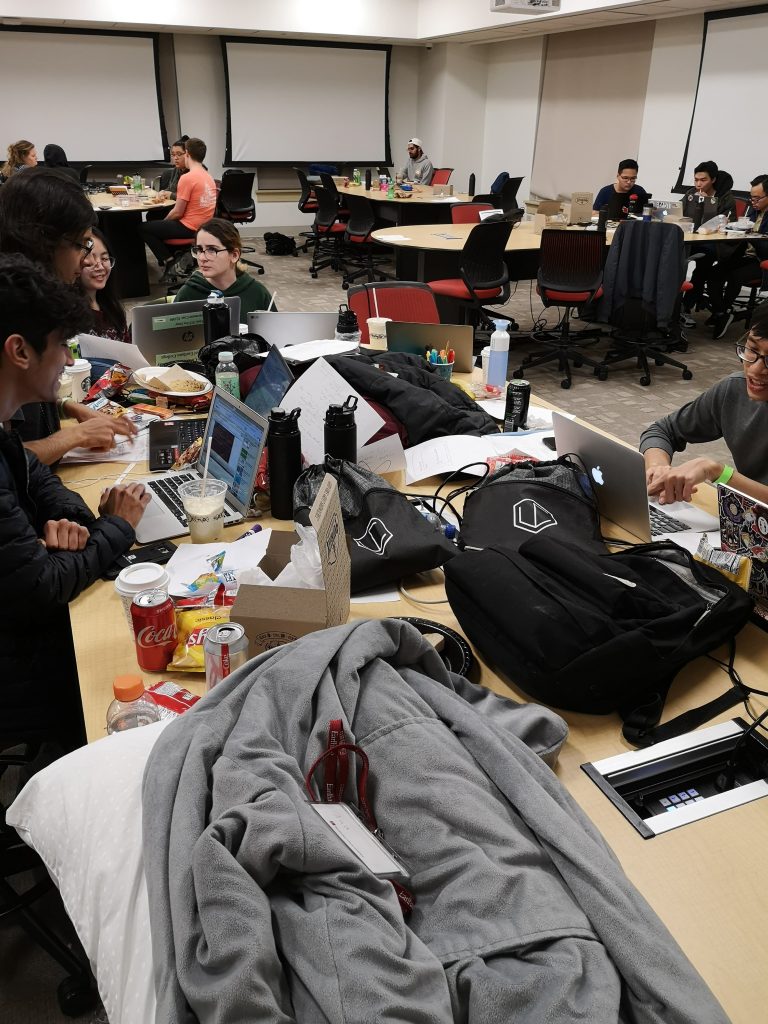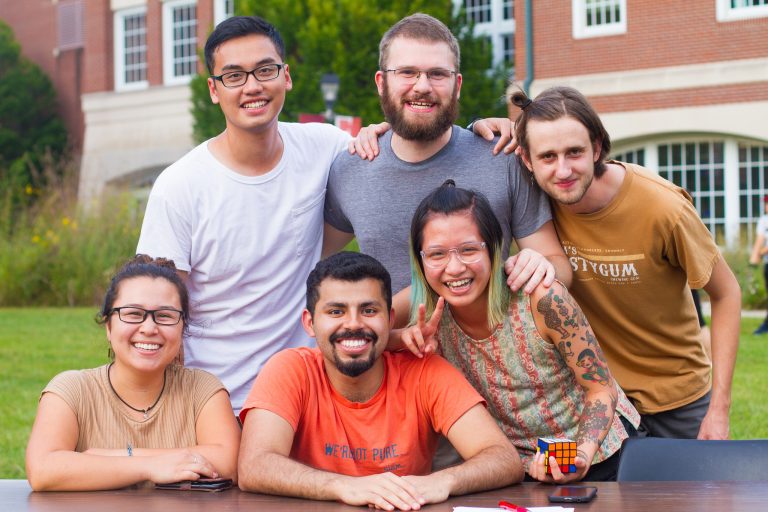By Ana Verulidze:
Long before I became a part of the community at Earlham College, I had planned to spend my freshman year of college exploring various fields of computer science. My curiosity towards areas like artificial intelligence, robotics and game development was piqued in my early high school years, and day by day it slowly turned from a hobby into a dream career. Even though it has only been a few months since my life changed drastically and I became an undergraduate student on foreign land, I can say that I’ve already had plenty of brilliant opportunities to pursue my passion and discover lots of new things. One of the greatest experiences that really helped me grow personally and think outside the box, was attending a two-day long hackathon at the University of Cincinnati.
 What was challenging for me, is probably the fact that I had never participated in any kinds of hackathons before, or done anything even slightly similar. It was quite a big surprise as well, that the group work lasted for 24 hours, during which, as the event organizers informed us, we could “choose to nap”, but it was not a huge necessity. Sitting in the auditorium with hundreds of other extremely motivated and hardworking students at the opening ceremony inspired me to do my best and create something I would be proud of on the next day. My teammates and I, despite having various backgrounds and experiences with programming, managed to pick a project that was fairly challenging, but also really fun to work on – a video game based on the doppler effect.
What was challenging for me, is probably the fact that I had never participated in any kinds of hackathons before, or done anything even slightly similar. It was quite a big surprise as well, that the group work lasted for 24 hours, during which, as the event organizers informed us, we could “choose to nap”, but it was not a huge necessity. Sitting in the auditorium with hundreds of other extremely motivated and hardworking students at the opening ceremony inspired me to do my best and create something I would be proud of on the next day. My teammates and I, despite having various backgrounds and experiences with programming, managed to pick a project that was fairly challenging, but also really fun to work on – a video game based on the doppler effect.
The idea behind this game is simple: the player character appears in a room full of so-called friends and enemies but is not able to distinguish them physically. As it approaches an enemy or vice versa – the enemy emits higher and higher-pitched sounds, while friends always keep silent. The goal, of course, is to find all friends and at the same time, avoid all enemies. In the beginning, due to my extreme interest in sound propagation and the doppler shift, I started designing a program that would generate a sound of a continuously increasing frequency, based on a single note of a lower frequency. I learned how to work with python’s audio processing tools, such as Pydub and Pysound, and later on, joined my friends in exploring Pygame. After hours of hard work with joined forces, our efforts paid off: we ended up with a fully functioning game, but also, with an arguably poor interface. That is something we’ve in fact kept working on ever since and are planning to improve even more. Besides enhancing the graphics, we would also like to design different levels of the game with more challenges, add mazes and player scores.
Attending this hackathon did not only allow me to improve my analytical or team working skills, but also opened a whole new dimension of ideas and opportunities for me. I got the chance to attend workshops about augmented reality and machine learning with TensorFlow. I learned about the projects that other students around me had worked on. Some of my favorite ones were the “Minecraft Discord Bot” and “Brave Little Toaster”. The discord bot was used to keep track of the credits each player had on the discord server and stop them from playing without having paid to use it, while the “brave toaster” was simply a repurposed old VCR player that toasted bread on different settings.

After all, despite having to stay awake almost all night and survive on high caffeine snacks, the event ended up being extremely informative and fun. It allowed me to view my abilities from a different perspective and see things I’m good at or need to keep working on, things I’ve never known before but would love to learn more about and brought me one step closer to my goals. On one hand, I believe that hackathons promote extremely poor working habits, although, on the other hand, I believe I couldn’t have gained so much knowledge and experience in such a short amount of time anywhere else.


